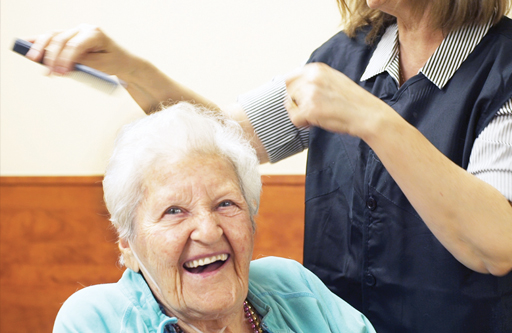
Fibromyalgia – Causes, Symptoms and Treatment Possibilities
By fibromyalgia, there are tender points in muscles, tendons, and ligaments around the body. The scores are especially common around the joints. Tender areas in the middle parts of the muscles are fewer and with lighter pain. The points give a constant aching and a sharper pain by pressure. However, muscular work and exercise do not necessarily increase the pain. When the muscles are warmed up and exercised, the pain may disappear or decrease for some time.
The neck, shoulder area, hips, knee surroundings, jaw joint areas, head, face, and eye surroundings are especially often affected. When the neck and head area is affected, the pain usually takes the form of a common headache.

Other symptoms of fibromyalgia are:
Muscular stiffness, especially in the morning.
Mental and physical fatigue.
Poor quality of sleep. The deep part of the sleep is especially affected.
Muscular tension.
Dizziness.
Anxious feelings.
Depressive feelings.
Disturbances in bowel function like diarrhea, constipation, pain, and bloating.
Bladder irritability.
Increased sensitivity to and irritability from sensorial stimuli, like light, sounds, and touch.
Dry mouth, eyes, and skin.
Pain during menstruation
The disease does not give any anatomical and tissue changes in the first place, but inactivity, tension, and poor circulation may, in the long run, affect the body shape and give inflammatory reactions.
THE CAUSES AND MECHANISMS OF FIBROMYALGIA
The exact causes of fibromyalgia are not yet fully understood. An injury to the upper spinal region may trigger the disease. Bacterial and viral infections may also be an initial cause of the disease. People living with fibromyalgia often have a magnesium deficiency.
The initial causes seem to alter the production and secretion of transmitter substances in the brain, and the nervous system, especially serotonin, melatonin, and substance P. Neurotransmitters carries signals from one nerve cell to another. Some signals from the central nervous system to the body may, therefore, be increased, and others decreased, producing the symptoms of the disease. The disturbed nerve signals then provide the following functional changes that give the symptoms of the disease:
An increased activity in brain parts, giving anxiety, and disturbing the deep sleep.
A decreased activity in other brain parts, producing depressive symptoms.
Increased muscular tension during sleep.
An increased constriction in the blood vessels in the muscular and joint structures.
Decreasing blood flow in the muscles and joint areas due to increased muscular tension and blood vessel constrictions.
A decreased activity of glands producing saliva, sebum, and tears.
LIFESTYLE MEASURES AND EXERCISE TO TREAT FIBROMYALGIA
It is difficult to find a treatment that completely cures the disease, but a skillful combination of lifestyle measures and sometimes also medical treatment can take away most symptoms.
The symptoms of fibromyalgia can make it challenging to attain an active lifestyle. Yet, to do work, sports activities and hobby activities will decrease the symptoms and the consequences of the disease.
Regular training will significantly decrease the symptoms of the disease. The training should engage all the muscles of the body and also include exercises that improve the condition.
A combination of muscle strength training, for example, weight-lifting and condition training as jogging, will be especially useful. Swimming exercises both the muscular strength and the condition at the same time, but the water should not be cold.
In the beginning, the training sessions should be short and easy, but they should be made longer and more substantial as one gets used to training activities.
Relaxation techniques like autogenous training and meditation can help to normalize the function of the nervous system and increase the blood flow to the muscles.
Physical yoga can help to reduce stiffness, increase the blood flow, and reduce anatomical defects in the joints and muscles.
The symptoms of fibromyalgia will often cause sufferers to believe that they manage less than they do. It may be useful for the sufferer from fibromyalgia to seek counseling to help him normalize his activity levels, or adopt a higher activity level compatible with his disease.
A healthy diet is essential. The food should be as natural as possible and include food sources like vegetables, fruit, full corn bread or cereals, nuts, almonds, fish, seafood, fouls, and mushrooms.
You should avoid significant amounts of fat meat, fat cheese, or saturated fat from milk and red meat. You should also avoid substantial amounts of soy oil or corn oil. You should not use margarine and avoid food containing chemically altered fat. Enormous amounts of all the mentioned fat types tend to deteriorate the blood circulation and increase inflammatory reactions.
You should consume fish oil, olive oil, rape oil, canola oil, nut oil, and sunflower oil, or food containing these type of fat like olives, nuts, sunflower seeds, and fat fish, because the fat you then consume will decrease inflammatory reactions in the muscles and joint areas.
MEDICAL TREATMENT OF FIBROMYALGIA
Certain types of medication can be used to relieve the symptoms for a time, but should generally not be used permanently:
Analgesics can reduce the pain in the tender points.
Antidepressants can help to take away depressive feelings and improve sleep.
Muscle relaxant at bedtime can help to relax during sleep.
On the market, you will also find alternative drugs to treat fibromyalgia, based on herbs, vitamins, minerals, and anti-oxidants. These drugs contain ingredients to give several useful effects:
To repair nutritional deficiencies found by fibromyalgia
To normalize the production of neurotransmitters and thereby improve the local blood circulation in muscles and joint surroundings.
To improve sleep and relaxation in the muscles during sleep.
To help with tiredness.
To reduce pain by an analgesic effect.
Examples of ingredients found in such medicines are:
Magnesium – To cure a deficiency in the body’s magnesium level.
5-HTP – A serotonin precursor to help against serotonin deficiency and thereby improve local blood circulation.
Melatonin – To improve sleep and relaxation during sleep.
Rhodiola Rosea extract – To help against fatigue.
Ginger Root – To treat pain and inflammation in muscles and joints.
Classical massage or other types of physical therapy, for example, a couple of times each week, can also help to increase blood flow, reduce tension, reduce stiffness, and thereby take away the pain.









